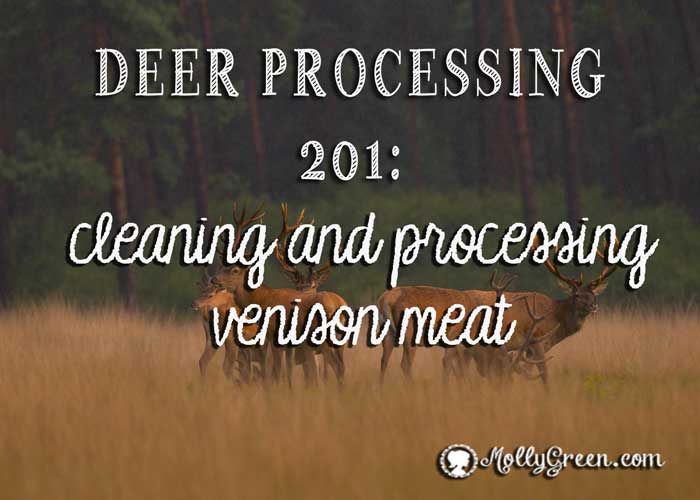By Meredith Duke
Now that your venison is in the freezer, it’s time to start round two—actually cleaning the membrane from the meat and creating different meat cuts. It really isn’t hard; just time consuming. It works best if you have two or three people to help with this step. I don’t have many pictures of these steps, but they are pretty simple. Once you’ve cleaned one piece of meat the rest are pretty much the same. The purpose of separating the membrane from the rest of the meat is that it ensures that the meat is a little more tender.
No one wants to eat the membrane. It’s nasty. This membrane is what adheres the meat to the skin. It’s the connective tissue. Definitely not something that would taste good. Hopefully you can tell in the picture above, but cleaning a piece of venison is quite simple. You’re simply removing this top layer, almost like filleting a fish. You only want to remove the tissue, not the meat itself.
Here are a few tips before you start:
- Go slow and easy. Do not rush. This is a process and takes time.
- Start at one end of the meat and work your way to the other end.
- Keep your fingers out of the way of the knife.
- Use a sharp knife. Better yet, have several different sharp knives handy.
How to Cut up a Deer
In the picture, I have one hand positioned behind the hand with the knife. I’m holding onto the meat with my free hand but keeping it away from the blade of the knife. If the knife slips then I will be less likely to slice my hand. Yes, it’s happened before, but I was being careless and in a rush. I learned not to do that. Slow and steady wins the race (without any wounds). If the meat is completely frozen, let it sit out for an hour or so until it is partially frozen. Working with frozen meat is asking for trouble.
Someone’s going to get hurt (probably you). Now, to get started. Carefully slip your knife between the tissue and the meat. Using steady pressure, slice between the meat and the tissue so that the tissue is separated from the venison. With your free hand, hold the tissue up and away from the meat and slice again in the same section, removing more of the tissue.
Continue to do this until the meat and tissue are completely separated. Continue to do this on all sides. Some sections of meat will be a little harder to do (especially the thinner pieces of meat). Just be patient and you’ll get them. If you see any glands, cut those out, too. They look like white sections of cartilage with a black dot. They can be somewhat hollow.
If you don’t remove these then the meat can have a gamey taste. Save the Scraps! All those pieces that you are removing and are not going to use, save them. Dogs love them and it gives them lots of iron, vitamins, and minerals. We use these scraps as dog food (along with leftover venison stock).
Venison Cuts
There are many different cuts you can make. For larger pieces of the hind leg you can:
- Leave it whole, like a roast
- Slice them into steaks. Remember to cut across the grain of the meat in order to have more tender cuts.
- Cut them into chunks for deer stew meat.
Save the smaller pieces (the little ones that don’t have any other use for either sausage or ground venison).
Packaging Your Deer Meat
Regardless of how you cut the meat, always wrap it in freezer paper and label it so that you know what it is you are pulling from the freezer. You might also put a date or year on the label so that you know how long it’s been in the freezer. Let me know how it goes! The next post in this series will be on how to make deer sausage.
Meredith Duke is a homesteading mama on the outskirts of Austin, Texas. She and her family are beekeepers, gardeners, hunters, and general “DIYers.” They are always seeking ways to expand their skills and learn the “old ways” whether it’s canning, quilting, or simply trying to find new ways to save money and be good stewards of their God-given resources. You can read more about the Duke family’s adventures at www.sangabrielfarm.com.






